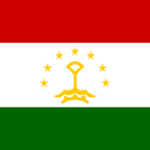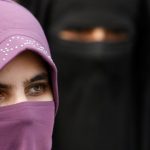Hijab Ban Campaign
Hijab Ban Campaign
Find more information about this campaign below.
Act Now
Background information
IHRC continues to advocate for the right of Muslim women to practice their faith without fear of discrimination by countries which adopt a hijab ban or place other restrictions or conditions on clothing. We have engaged on this issue with countries through letter writing campaigns as well as the regional and international levels at conferences and through research. We encourage you to also campaign against these policies using the resources on this site.
France:
In 2004, the French government introduced a ban on religious symbols, including the hijab, under its interpretation of laïcité (secularism). In 2010, another law was passed banning the wearing of face-covering veils, such as the niqab and burqa, in public spaces. The Hijab ban and Burqa ban infringe on the religious freedom of Muslim women to practice their faith. In IHRC’s campaign in France, we have produced a report titled ‘For Liberty? The Impact of the French Ban on the Islamic Headscarf and Other Religious Symbols in Schools’.
Turkiye:
Turkiye has placed a ban on wearing the hijab in public institutions, including universities and government offices, as part of the state’s interpretation of secularism. In the midst of the Hijab ban at universities, a protest in Matalya took place resulting in the arrest of 75 demonstrators. Among those arrested was Huda Katya and her daughters. IHRC campaigned for their release as part of our Prisoners of Faith Campaign.
The right to express religion through clothing such as the hijab, niqab, abaya and modest clothing, such as long skirts, has come under attack by diverse governments, e.g. Bulgaria, Belgium, Azerbaijan, Switzerland, Germany and in 2024 even Tajikistan.
Key facts & figures
From 1946 to the present day, Palestinians have seen the percentage of land they control shrink from 96% to 12%.
The Israeli/Egyptian blockade of the Gaza Strip has created an unemployment rate of 45%.
There are approximately six million Palestinian refugees making them the world’s largest refugee population.
An academic study in 2020 found that 53.5% of children in Gaza were suffering from Post Traumatic Stress Disorder.
Statements
Your support helps our campaign
We work with different organizations from Muslim and non-Muslim backgrounds, to campaign for justice for all peoples regardless of their racial, confessional or political background.
Reports
Briefings
Open Letters
Choose from options and QUICK DONATE






